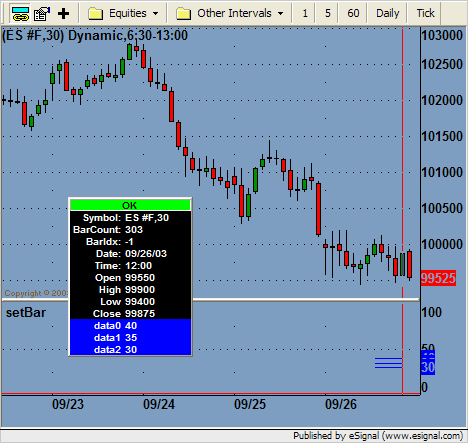I have a DLL which collects various data and makes it available to eSignal EFS.
The main () procedure returns the value to plot for the current bar. My problem is that my EFS formula requests the data for the current (real-time) bar often before the DLL has it ready, and so I cannot calculate the value for main () to return.
My DLL data is ready by the first tick into the next bar, so I find myself needing to return a value to plot one bar ago (as opposed to the current bar).
Is there any way to do this?
The only solution I have come up with is to "reloadEFS ()" once the data is ready, so that the entire formula is reloaded and replotted. This is inefficient and processor intensive.
The main () procedure returns the value to plot for the current bar. My problem is that my EFS formula requests the data for the current (real-time) bar often before the DLL has it ready, and so I cannot calculate the value for main () to return.
My DLL data is ready by the first tick into the next bar, so I find myself needing to return a value to plot one bar ago (as opposed to the current bar).
Is there any way to do this?
The only solution I have come up with is to "reloadEFS ()" once the data is ready, so that the entire formula is reloaded and replotted. This is inefficient and processor intensive.

Comment